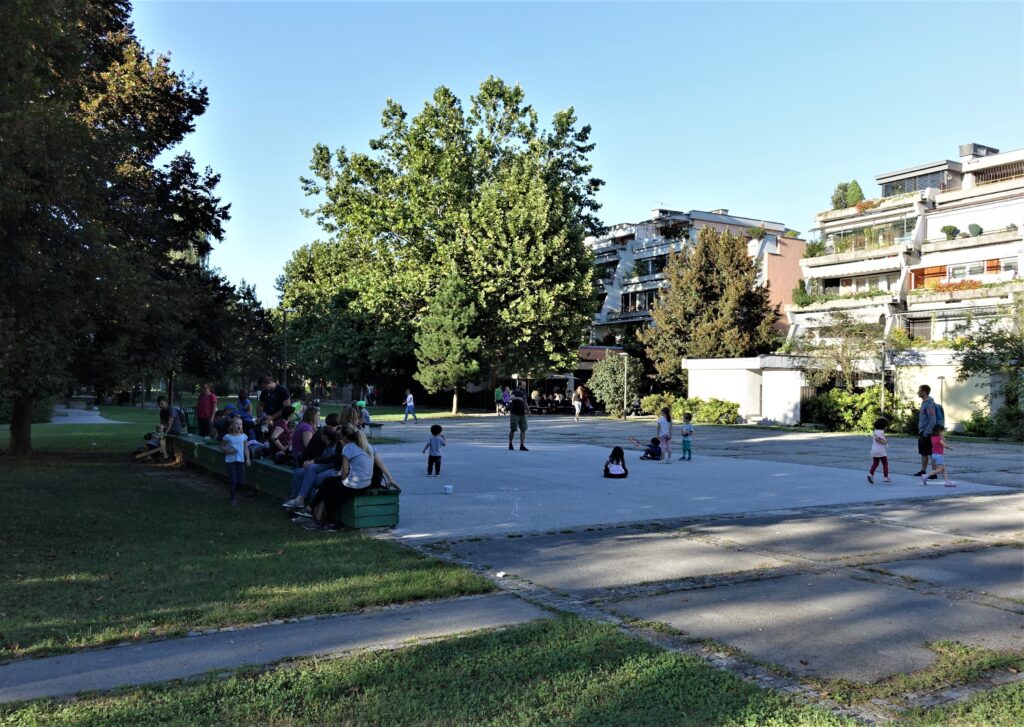Common goods and open public space: parks and playgrounds
As the significant alterations to the original urban and functional concept of a neighbourhood usually result in an inferior user experience of the space, the partition and privatisation of public spaces within the neighbourhoods must be outlawed. They must be given the status of the built public good, remain whole and available to all users. The competencies and responsibilities of public utility companies and the local community in these spaces must be agreed upon.
The fencing of individual buildings or areas (with some rear exeptions, such as playgrounds for ball games) within the neighbourhood is not permissible; fences limit passages and shortcuts and accesses to (semi-) public common space. Barriers deny the idea of a common; the building that stands behind a fence is isolated from the surrounding of which it is supposed to be an integral part.

Open spaces in neighbourhoods facilitate the establishment of new relationships between people, so they must be well maintained and purposely used. A practice of comprehensive urban renovation of neighbourhoods should be established on the local level to improve their physical, economic and social state. An inclusive process of spatial renovation strengthens the ties between the residents and their sense of belonging to the community; the more then residents use the space, the more they perceive it as their own property. Consequently, public places within neighbourhoods are better maintained.
Public areas in general should be considered as a common good, “our common” space, irrespective of ownership. Anyone who uses the place co-creates it with their presence, use, activities. The responsibility (at least moral) for proper maintenance and orderliness of public spaces is the responsibility of the entire community; the users of the space must become its active custodians.
A substantial improvement of the situation in the open public space in the neighbourhoods is possible with the appropriate engagement of the inhabitants and other users of the space. But successful conprehensive renovation of neighbourhoods is possible only through fruitful co-operation of all stakeholders (public institutions (state, municipalities), economic organisations, residents, NGOs and technical experts) from the very outset.